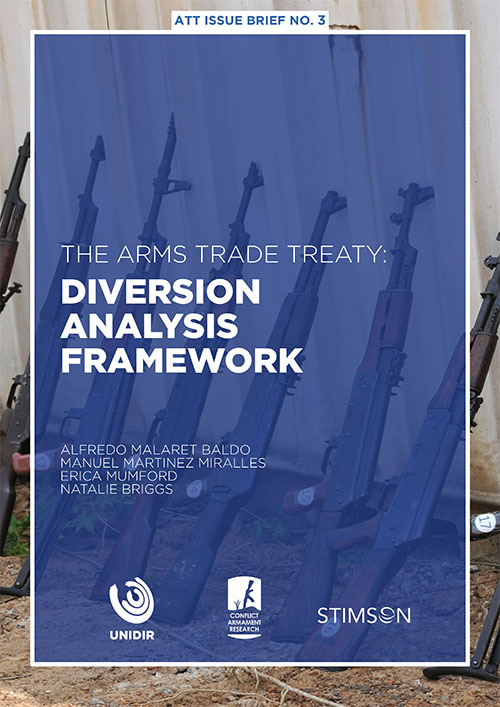The diversion of conventional arms occurs in settings considered at peace, in armed conflict, or affected by armed violence. To identify the most effective ways to prevent such incidents, the key challenge lies in understanding all aspects of the problem and making an accurate context-specific diagnosis.
The third in a series from UNIDIR, Conflict Armament Research, and the Stimson Center, this Issue Brief presents the Diversion Analysis Framework (DAF). The Framework has been designed as an analytical tool for interested States and relevant stakeholders to enhance their ongoing efforts to prevent, detect, eradicate, and address diversion. It is hoped that by gaining a better understanding of the problem, appropriate measures can be taken by each State to create an enabling environment to counter, not facilitate, diversion. The objective of this joint research endeavour is to enhance knowledge and facilitate dialogue among States to strengthen shared understanding on the impact of the ATT in addressing risks of diversion, and to identify avenues to further promote effective policies and practices under the Treaty.
Citation: Manuel Martinez, Alfredo Malaret, Erica Mumford and Natalie Briggs (2021) "Arms Trade Treaty Issue Brief 3: Diversion Analysis Framework", UNIDIR, Conflict Armament Research, and Stimson Center. https://doi.org/10.37559/CAAP/21/ASC/03
